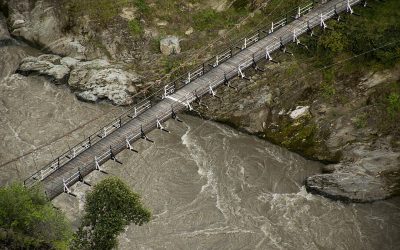The Kashmir conflict, a long-standing territorial dispute between India and Pakistan, has been a flashpoint for multiple wars and ongoing unrest since the partition of British India in 1947.
The roots of the conflict

The origins of the Kashmir conflict lie in the partition of British India in 1947, which created the two independent dominions of India and Pakistan. The princely state of Jammu and Kashmir, with its predominantly Muslim population but Hindu ruler Maharaja Hari Singh, became a contentious issue. The Maharaja’s decision to accede to India in October 1947 led to the first Indo-Pakistani War, ending with a United Nations-mediated ceasefire and the establishment of the Line of Control (LoC), dividing Kashmir into areas administered by India and Pakistan.
The Indo-Pakistani War of 1965
By 1965, simmering tensions over Kashmir boiled over into a full-scale war. The conflict began with Pakistani forces infiltrating Indian-administered Kashmir in a bid to incite insurgency. India responded with a large-scale military offensive across the international border.
Key battles and strategies
- Operation Gibraltar: Pakistan’s strategy involved sending guerrilla fighters into Jammu and Kashmir to incite a rebellion among the local population. This operation was a crucial trigger for the 1965 war.
- Battle of Asal Uttar: One of the largest tank battles since World War II, this engagement saw Indian forces repelling Pakistani advances in Punjab.
- Operation Grand Slam: Pakistan’s attempt to capture the strategic town of Akhnoor to sever communications and supply lines in Jammu.
The war saw intense fighting in the Jammu and Kashmir regions, Punjab, and along the international border. Both sides suffered significant casualties, and despite initial gains, neither side achieved a decisive victory. The war ended with a UN-brokered ceasefire and the Tashkent Agreement in January 1966, with both countries agreeing to withdraw to pre-war positions.
The Kargil War of 1999
The Kargil War, which occurred in the high-altitude Kargil district of Jammu and Kashmir in 1999, marked another major confrontation over Kashmir. Unlike previous conflicts, this war was characterised by limited territorial scope but intense combat and international scrutiny.
Prelude to war
In May 1999, Indian patrols discovered that Pakistani soldiers and Kashmiri militants had occupied strategic heights on the Indian side of the LoC, intending to sever the link between Kashmir and Ladakh and to force India to negotiate the broader Kashmir dispute.
The conflict unfolds
- Operation Vijay: India launched this operation to clear the Kargil sector of infiltrators. The conflict involved high-altitude warfare, with Indian soldiers battling harsh terrain and entrenched enemy positions.
- Battle of Tololing: One of the key engagements where Indian forces successfully recaptured vital peaks from Pakistani troops.
The war ended in July 1999 after intense fighting and international diplomatic pressure, particularly from the United States, which urged Pakistan to withdraw its forces. India regained control of the captured territories, but the conflict left deep scars and heightened mistrust between the two nations.
The 2016 Kashmir Unrest
The Kashmir region witnessed significant unrest in 2016, triggered by the killing of Burhan Wani, a popular militant leader, by Indian security forces. Wani’s death on 8 July 2016 sparked widespread protests and violence across the Kashmir Valley.
Escalation of violence
- Mass Protests: Thousands of Kashmiri youths took to the streets, clashing with security forces. The protests were marked by stone-pelting, arson, and calls for independence or merger with Pakistan.
- Security crackdown: Indian authorities responded with curfews, restrictions on movement, and the use of pellet guns, which caused numerous injuries and blinded several protesters.
The unrest resulted in over 90 deaths and thousands of injuries, highlighting the deep-seated grievances and the volatile nature of the Kashmir issue. The 2016 conflict underscored the challenges in resolving the dispute, with political, social, and military dimensions deeply intertwined.
Unresolved
The Kashmir conflict remains one of the world’s most intractable and dangerous disputes. The Indo-Pakistani War of 1965, the Kargil War of 1999, and the 2016 unrest are significant episodes in this protracted conflict. Each event has impacted the region’s geopolitical landscape, underscoring the urgent need for a peaceful resolution. The enduring strife continues to affect millions of lives, and the path to peace remains fraught with challenges, requiring sustained dialogue, empathy, and international cooperation.






Leave a Reply